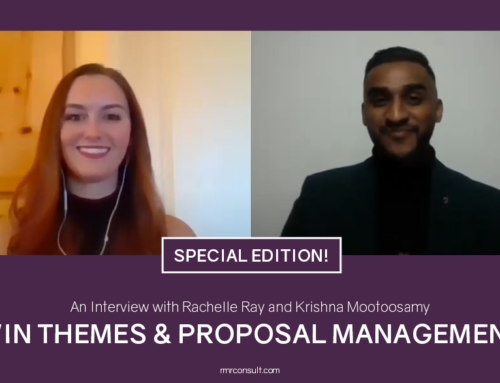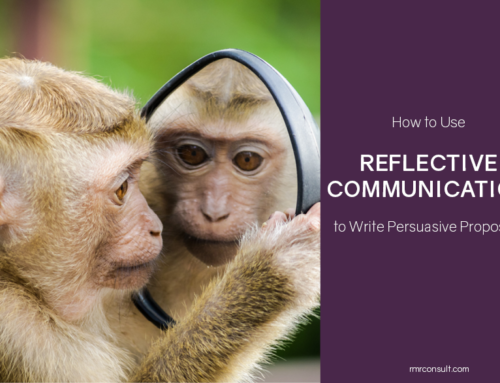What to Do with a Difficult RFP
Have you ever read through a difficult RFP and wondered ‘what the heck is this?’ or ‘what do they want from me?’ If so, you’re not alone. Difficult RFPs that are convoluted or hard to follow leak into the world often. It’s generally not the fault of your client (I promise, they aren’t sadists) though it can feel as if they’re presenting you with extra hoops to jump through.
What is a Convoluted RFP?
You might be dealing with a convoluted RFP if:
- It is incomplete or lacking important information or details.
- The scope or project is not clearly defined.
- The proposal requirements are unclear.
- The proposal requirements and evaluation criteria don’t align.
- It asks for duplicate information in multiple sections.
- The requested information is erroneous or irrelevant to the scope of work.
- The proposal requirements don’t match the scope.
This isn’t a complete list, mind you. You’ll know when you’ve picked up a complicated, convoluted, mess of an RFP – trust me.
Is this a Test?
You might be tempted to think that navigating a difficult RFP is some sort of test of your firm’s ability to follow complex directions but, no, it’s not a test. It is a choice though, or rather a series of choices. When faced with a difficult RFP, one school of thought is to toss it in the garbage because a sloppy RFP is indicative of a poor client. In many cases, I say throw that school of thought in the garbage instead, because it’s presumptuous and clearly does not understand the nature of most public (and many private) procurement departments.
You see, entities like small municipalities or school districts often have lean procurement teams that deal with smaller purchase orders (you know, the important stuff that keeps the whole place running day-to-day). If the organization doesn’t do a whole lot of building, then it’s completely feasible that the procurement staff haven’t seen, written, or managed a design or construction RFP recently – if ever. When this is the case, the procurement manager will do whatever they can to get their job done. This usually means Frankenstein-ing an RFP pieced together from whatever similar RFPs they could find.
This is where you get requirements for bonding capacity in design professional RFPs, or requests for design professional services in construction bids.
You might be thinking ‘so what?’ It’s not your problem that the procurement manager can’t put together a decent RFP, is it?
Actually, it is. And understanding why that RFP exists is critical to your next steps.
What the Heck Do You Do With a Difficult RFP?
First, confirm that you do want to work with this client, or do want to work on this project. Imagine the RFP was perfect, and remove that from the equation. Still interested? Move on to the next step.
Once you’ve confirmed with your team that you are still interested in this project, make sure you have the capacity to put in the work for a complicated proposal. We’re going to try and make it easier in the next section, but be prepared for the possibility of having a whole lot of extra items to check off in this document.
If you’re still prepared to respond to the RFP, here are a few steps you can take to try and clear up the difficult language.
Handling a Difficult RFP
Re-read the RFP and highlight all of the parts you have questions about. The following are common issues I see in difficult RFPs, as well as recommended solutions for responding to them.
Issue: Missing or incomplete scope.
Sometimes an RFP will fail to provide a detailed scope of work or description of the project. Sometimes it excludes budget information or other details you need to prepare your proposal.
Solution:
Check to see if there is an advertisement or attachment to the RFP that provides the scope. Attending a pre-proposal or pre-bid meeting is also an option; the client might discuss the scope in more depth at the meeting, and if they don’t you have an opportunity to ask specific questions in-person. If there is no pre-bid, or the scope is still not clearly defined following the meeting, prepare specific questions for the client to answer. You are more likely to get responses to questions like ‘what is the estimated size of the project’ than ‘what is the project scope?’ Also note that in some cases, budget/MACC information is kept confidential.
Issue: Missing response requirements.
It might not be clear exactly what the client wants to see in your response, or the RFP could be missing critical information like the address to submit proposals, the number of proposals, formatting requirements, page limits, etc. If there’s anything you absolutely need to know to write a quality proposal, make a note of it.
Solution:
Request clarification for the specific missing items.
Issue: Conflicting response requirements.
Some RFPs provide a list of technical requirements, a list of qualifications requirements, and then have separate evaluation criteria that don’t appear to fit with any of the earlier requirements.
Solution:
Make a note of each place in the RFP the requirements conflict (include page numbers). If entire sections conflict, you can ask which section you follow when tabbing your proposal. If only pieces conflict (i.e. one section asks for 4 relevant projects and another asks for 10) ask for clarification on which requirements to follow for that particular element.
Issue: Duplication of requirements.
Unfortunately, this isn’t always an issue for the client. They may ask about your team in three different sections, which could seem odd to you but isn’t to them. On some occasions, however, the exact same question might be written twice, in which case it’s worth pointing out and trying to get one of the questions removed.
Solution:
Before requesting clarification on duplicate requirements, see if you can discern differences between them. One section might be asking for firm profiles, while the next is asking for small business qualifications, resumes, or team project experience. If you can’t spot the differences, try framing your question to the procurement manager as a clarification of the information required for each section rather than a demand that the duplicate questions be removed. If the answer you receive isn’t satisfactory (i.e. you must still answer each question within each section) you can try referencing previous sections in your proposal. Note: make sure the RFP does not prohibit referencing between sections before you take this approach.
Best Practices for Emailing Procurement Managers
- Make sure your questions are clear and concise.
- Include the RFP page numbers and quote directly from the RFP so they can see what you’re talking about.
- Keep your questions separate, so they’re easier to answer. (i.e. Instead of asking ‘What is the page limit, formatting requirements, and how would you like this bound?’ Separate your question into three distinct questions: ‘What is the page limit?’ What, if any, are the formatting requirements?’ ‘How would you like proposals bound?’)
- It never hurts to be polite! I always like to open my emails with ‘hope this finds you well’ or ‘happy *day of the week*’ and close with ‘thank you in advance’ or ‘I appreciate your time and attention’. Make them feel appreciated, not attacked.
- If you have the opportunity, connect with the procurement manager at the pre-proposal or pre-bid. This is a great place to voice some of your concerns without your tone being misread (as it often is in an email). Remember to ask questions during the meeting, when everyone can benefit from the response, but take note of how the procurement staff member is handling the questions. If they appear overwhelmed, try talking with them one-on-one after the meeting.
- A phone call never hurt anybody, but remember to get responses in writing! If you’re more comfortable calling up the procurement manager, and the RFP allows it, that’s fine. Responses aren’t often binding unless they’re distributed in writing though, so make sure to follow up with an email after your conversation.
I’m going to reiterate this one more time: be nice! Do whatever you can to help the procurement manager feel at ease, rather than attacked. It’s common for people to get defensive when they’re essentially hearing that they’ve done a terrible job. (How would you feel if they called you up after the due date just to expose the flaws of your proposal in detail?)
When Do I Give Up On A Difficult RFP?
Sometimes, despite our absolute best efforts, we just can’t figure out what the client wants. The procurement manager might not respond – or worse, they respond with ‘it’s in the RFP’. If this happens, try your best to organize the requirements in a logical way. If you still don’t feel that you can deliver a quality proposal, then it might be time to give up the fight.
If you do choose to forgo an RFP, there are still a couple of things you can do to prepare yourself for the next round. The first is to try and get on the selection committee. Many clients will include an industry professional that did not submit a proposal on the review committee, so try reaching out to the procurement manager to see if that is an option. Explain that why you want to do this (i.e. to better understand the client and what they’re looking for) and what your qualifications are (i.e. how long you’ve been in the industry, what would make you an asset to the review team, etc.). This isn’t always possible, but nothing ventured, nothing gained right?
The other option is to try and develop a relationship with this client moving forward. Check-in with them regularly and start treating them like a hot lead rather than that client that had work that one time. The goal is to build a relationship so that the client is more forthcoming with responses (or in the best-case scenario asks for your assistance writing an RFP).
Have you dealt with a difficult RFP? Tell us about it in the comments (remember, this is the Internet so no client names, please).






Leave A Comment